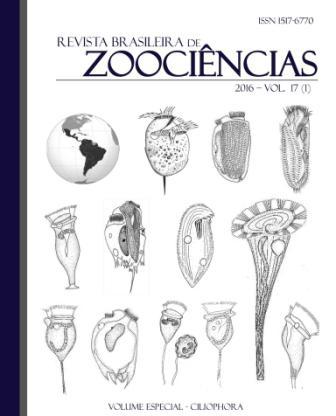Description and molecular phylogeny of Paramecium grohmannae sp. nov. (Ciliophora, Peniculida) from a wastewater treatment plant in Brazil
Resumo
A new morphological species of Paramecium Müller, 1773, was discovered in samples of water with activated sludge of a wastewater treatment plant in Rio de Janeiro, Brazil. It is described based on light microscopy and its phylogenetic position hypothesized from 18S-rDNA analyses. Paramecium grohmannae sp. nov. is characterized by a unique combination of features. It is a counterclockwise rotating freshwater Paramecium with body outline intermediate between “aurelia” and “bursaria” forms, two contractile vacuoles, each with one excretion pore and usually nine collecting canals; oral opening slight below body equator; macronucleus ellipsoid to obovoid, measuring ~64 x 24 μm and located in anterior half of body; one (less frequently two) globular endosomal micronuclei ~5 μm in diameter with endosome ~2.5 μm. Phylogenetic analyses unambiguously place the new species within the P. multimicronucleatum complex.Downloads
Não há dados estatísticos.
Downloads
Publicado
2016-11-04
Edição
Seção
Artigos



